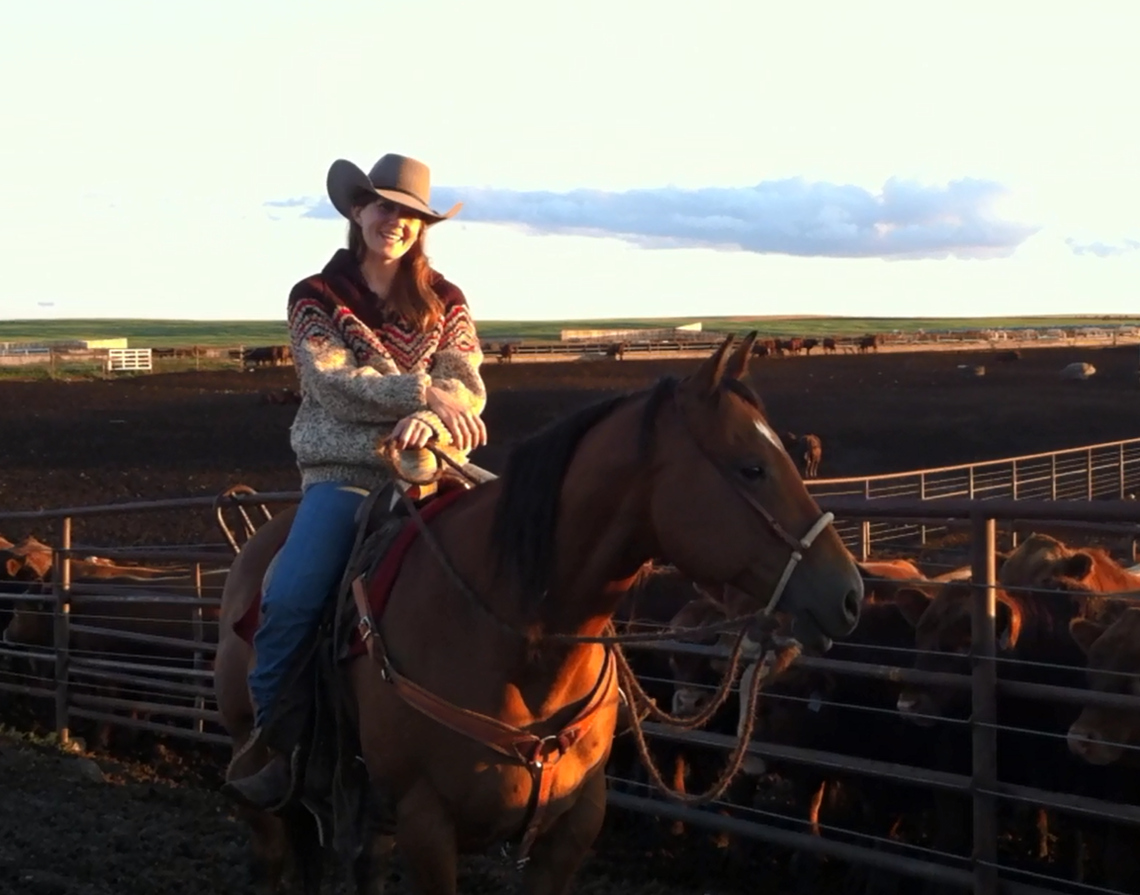Feb. 17, 2021
UCalgary researchers publish first study on welfare of bucking horses at Calgary Stampede
Rodeo is more than just a sport. At least it is here in Alberta. Rodeo events encompass core skills that those working with livestock traditionally needed in order to safely and effectively manage their animals day to day. Many of the skills — including staying on the back of an untrained horse — are still important today.
The sport is not without controversy. But those who support rodeo and those who do not often find themselves asking the same question: How do the animals feel about their participation in such events?
A new study conducted by the University of Calgary Faculty of Veterinary Medicine (UCVM) at the Calgary Stampede was published in the journal Applied Animal Behaviour Science, aiming to provide some insight into that question. See the full study.
The study is the result of years of effort with the Stampede, says Dr. Ed Pajor, PhD, professor at UCVM, the Anderson-Chisholm Chair of Animal Behaviour and Welfare, the director of W.A. Ranches and a member of the Calgary Stampede’s Animal Care Advisory Panel. Pajor and co-authors Dr. Christy Goldhawk, a research associate at UCVM, and Dr. Temple Grandin, an internationally renowned animal welfare expert and professor of animal science at Colorado State University, aimed to answer one simple question; “Do animals find participation in rodeos aversive?”

Ed Pajor, professor at UCVM, the Anderson-Chisholm Chair of Animal Behaviour and Welfare, and the director of W.A. Ranches.
Faculty of Veterinary Medicine
“It was a challenging question to answer,” says Pajor. “It required observing the behaviours of competition horses over three years during the Stampede rodeo. We were lucky to have an expert like Temple who could help provide us insight into this question, as well as a partner like the Stampede that was willing to give us unfettered access to their animals and events.
He says the extent to which the Stampede has provided access to animals behind the scenes is amazing. He felt he could take anyone, anywhere, to observe how animals are treated without any interference.
A lack of research on rodeo animals
The study, "Effect of Animal’s Experience and Rodeo Procedures on Behaviour of Bucking Horses at a Large Commercial Rodeo in Canada" is the first to evaluate the welfare of bucking horses at rodeos, and one of only four to ever be published on the welfare of animals used in rodeos.
“There are lots of different camps when it comes to rodeos,” says Pajor. “Some see the sport as a positive reflection of agriculture and rural life. Others believe animals should not be a part of any sport, and many sit somewhere in between. The reality is, there is no specific scientific data to help understand and inform the discussion one way or the other.”
The published findings of the study are written in a way that everyone can understand — something Pajor believes is important to ensure everyone can use the data to inform the discussion.
Study finds low frequency of aversiveness for animals in Stampede rodeo
Over the course of three years, Pajor and Goldhawk worked with UCVM students during the 10-day event to observe the horses behind the chutes — the areas where the animals wait before being let into the arena.

Christy Goldhawk, a research associate at UCVM.
Christy Goldhawk
The Stampede provided their team of Doctor of Veterinary Medicine (DVM) and grad students access to the rodeo, and their records for each horse so they could see the age of the horses, and how many times they had competed at the Stampede.
“Horses with more exposure to a rodeo environment showed less signs of aversiveness than those that were less experienced,” says Goldhawk.
She’s quick to point out that there was no way of knowing in this environment if the lack of aversiveness shown by more experienced horses is because they are habituated or just resigned. But from the start of the study, Goldhawk says she was really impressed by the calmness of the animals.
“We found that most of the areas where animals do show signs of discomfort can be easily changed,” says Goldhawk. “For example, we know they often avoid tight spaces with lots of people — their behaviours show that. We made recommendations in our paper for how those areas can be modified to make the animals feel more secure.”
Stampede makes changes based on UCVM findings
Pajor says the Stampede has always been very receptive to findings and recommendations made from UCVM research conducted there, adding that they have made significant changes based on results of previous research.
“It’s extremely important to use research and science to influence our decisions,” says Robert Wise, the Calgary Stampede’s director of agriculture and western events. “We have over one million people looking for animal experiences each year. It’s important to us and to our community that we are constantly learning and building our animal welfare.”

Robert Wise, the Calgary Stampede’s director of agriculture and western events.
Calgary Stampede
Wise says the working relationship the Stampede has with UCVM has been invaluable, giving them countless insights and actionable recommendations for improving animal welfare.
“For example, when we learned that animals appeared to show some uneasiness when they could see spectators above them in the loading area, we added a tented structure to prevent this from occurring.”
Summer student projects were also used to confirm that animals were provided enough water after performance events and they discovered additional water troughs were not required.
“Sometimes it is not about new changes but collecting data to critically analyze existing practices.”
He says the changes they implement based on UCVM study recommendations have a positive ripple effect at other rodeos, providing a comprehensive guide, through both rule changes and guidelines for best practices.
“The research done at the Stampede helps others help animals,” says Wise. “It’s a remarkable partnership that gives us the opportunity to help build the next generation of veterinarians and handlers who care for these animals.”
Doing research at Stampede like 'brain candy'
Dr. Jennifer Pearson, DVM, PhD, is a veterinarian and assistant professor of bovine health management at W.A. Ranches. She recently joined the faculty after completing her doctorate investigating the impacts of calving difficulty on calf health and animal welfare at UCVM.
“Ed [Pajor] and I always say doing research at the Stampede is like brain candy for academics,” she says. “It’s very different than traditional research. We get to work with animals in a different setting with different people, and really push the investigative side of our brain to solve problems.”
She has worked on a number of research projects at the Stampede and says getting to talk to the handlers and understand their first-hand experiences gives vet students an incredible exposure to rodeo, and how animal welfare is taken into account.
“They get to observe the animals, develop a question and follow through an investigation to get answers.”
While last year’s projects with the Stampede were put on hold — along with the event itself — due to COVID-19, Pearson looks forward to future research with the Stampede on animal experiences, health, behaviour and welfare. And not just on rodeo animals.
As for Wise and the rest of his team, it doesn’t take a behavioural scientist to see the feeling is mutual.





